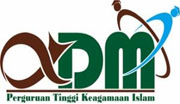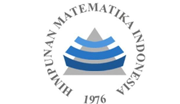Intelligent Actuator Control in Smart Agriculture through Machine Learning and Sensor Data Integration
Abstract
Keywords
Full Text:
PDFReferences
W. Kabato, G. T. Getnet, T. Sinore, A. Nemeth, and Z. Molnár, “Towards Climate-Smart Agriculture: Strategies for Sustainable Agricultural Production, Food Security, and Greenhouse Gas Reduction,” Mar. 01, 2025, Multidisciplinary Digital Publishing Institute (MDPI). doi: 10.3390/agronomy15030565.
Q. Javaid, “MZ Journals Sustainable Solutions for a Warming Planet Climate Smart Agriculture as a Tool for Global Food Security.” [Online]. Available: https://mzjournal.com/index.php/MZCJ
M. N. Reza et al., “Trends of Soil and Solution Nutrient Sensing for Open Field and Hydroponic Cultivation in Facilitated Smart Agriculture,” Jan. 01, 2025, Multidisciplinary Digital Publishing Institute (MDPI). doi: 10.3390/s25020453.
M. K. Senapaty, A. Ray, and N. Padhy, “IoT-Enabled Soil Nutrient Analysis and Crop Recommendation Model for Precision Agriculture,” Computers, vol. 12, no. 3, Mar. 2023, doi: 10.3390/computers12030061.
P. Musa, H. Sugeru, and E. P. Wibowo, “Wireless Sensor Networks for Precision Agriculture: A Review of NPK Sensor Implementations,” Jan. 01, 2024, Multidisciplinary Digital Publishing Institute (MDPI). doi: 10.3390/s24010051.
A. Hoque, A. S. Mazumder, S. Roy, P. Saikia, and K. Kumar, “Transformative Approaches to Agricultural Sustainability: Automation, Smart Greenhouses, and AI,” Int J Res Appl Sci Eng Technol, vol. 13, pp. 1011–1023, Jan. 2025, doi: 10.22214/ijraset.2025.66494.
R. Wacas, “SMART GREENHOUSE: AN IOT-BASED MONITORING AND CONTROL SYSTEM WITH PREDICTIVE ANALYTICS,” vol. 8, pp. 2423–3080, Nov. 2024.
R. Rayhana, G. Xiao, and Z. Liu, “Internet of Things Empowered Smart Greenhouse,” IEEE Journal of Radio Frequency Identification, vol. PP, p. 1, Mar. 2020, doi: 10.1109/JRFID.2020.2984391.
S. Islam et al., “Image Processing and Support Vector Machine (SVM) for Classifying Environmental Stress Symptoms of Pepper Seedlings Grown in a Plant Factory,” Agronomy, vol. 14, p. 2043, Sep. 2024, doi: 10.3390/agronomy14092043.
P. Gourshettiwar and K. Reddy, “A Comprehensive Analysis with Machine Learning Algorithm and IoT Integration in Hydroponic Vegetable System for Nu-trition Management of Plants/Crops,” Sep. 05, 2024. doi: 10.20944/preprints202409.0279.v1.
A. Kaur, D. P. Bhatt, and L. Raja, “Developing a Hybrid Irrigation System for Smart Agriculture Using IoT Sensors and Machine Learning in Sri Ganganagar, Rajasthan,” J Sens, vol. 2024, no. 1, p. 6676907, Jan. 2024, doi: https://doi.org/10.1155/2024/6676907.
Y. Mekonnen, S. Namuduri, L. Burton, A. Sarwat, and S. Bhansali, “Review—Machine Learning Techniques in Wireless Sensor Network Based Precision Agriculture,” J Electrochem Soc, vol. 167, no. 3, p. 037522, Jan. 2020, doi: 10.1149/2.0222003jes.
M. Platero-Horcajadas, S. Pardo-Pina, J. M. Cámara-Zapata, J. A. Brenes-Carranza, and F. J. Ferrández-Pastor, “Enhancing Greenhouse Efficiency: Integrating IoT and Reinforcement Learning for Optimized Climate Control,” Sensors, vol. 24, no. 24, Dec. 2024, doi: 10.3390/s24248109.
G. Airlangga, J. Bata, O. I. Adi Nugroho, and B. H. P. Lim, “Hybrid CNN-LSTM Model with Custom Activation and Loss Functions for Predicting Fan Actuator States in Smart Greenhouses,” AgriEngineering, vol. 7, no. 4, Apr. 2025, doi: 10.3390/agriengineering7040118.
A. Escamilla-García, G. M. Soto-Zarazúa, M. Toledano-Ayala, E. Rivas-Araiza, and A. Gastélum-Barrios, “Applications of artificial neural networks in greenhouse technology and overview for smart agriculture development,” Jun. 01, 2020, MDPI AG. doi: 10.3390/app10113835.
M. S. Farooq, R. Javid, S. Riaz, and Z. Atal, “IoT Based Smart Greenhouse Framework and Control Strategies for Sustainable Agriculture,” 2022, Institute of Electrical and Electronics Engineers Inc. doi: 10.1109/ACCESS.2022.3204066.
H. Liu and X. Meng, “Explainable Ensemble Learning Model for Residual Strength Forecasting of Defective Pipelines,” Applied Sciences (Switzerland), vol. 15, no. 7, Apr. 2025, doi: 10.3390/app15074031.
A. F. Ibrahim and M. A. Hussein, “Leveraging machine learning for prediction and optimization of texture properties of sustainable activated carbon derived from waste materials,” Sci Rep, vol. 15, no. 1, Dec. 2025, doi: 10.1038/s41598-025-95061-3.
Y. Song et al., “High-performance prediction of soil organic carbon using automatic hyperparameter optimization method in the yellow river delta of China,” Comput Electron Agric, vol. 236, p. 110490, 2025, doi: https://doi.org/10.1016/j.compag.2025.110490.
X. Tang, M. Petković, G.-K. Chappa, L. Vieira, and N. Dropka, “Comparative analysis of machine learning approaches for predicting and interpreting Cz-sapphire growth,” J Cryst Growth, vol. 664, p. 128185, 2025, doi: https://doi.org/10.1016/j.jcrysgro.2025.128185.
Q. Y. Chen, S. M. Yin, M. M. Shao, F. S. Yi, and H. Z. Shi, “Machine learning-based Diagnostic model for determining the etiology of pleural effusion using Age, ADA and LDH,” Respir Res, vol. 26, no. 1, Dec. 2025, doi: 10.1186/s12931-025-03253-2.
M. Vakili, M. Ghamsari, and M. Rezaei, “Performance Analysis and Comparison of Machine and Deep Learning Algorithms for IoT Data Classification,” 2020.
Y. Yustikasari, H. Mubarok, and R. Rianto, “Comparative Analysis Performance of K-Nearest Neighbor Algorithm and Adaptive Boosting on the Prediction of Non-Cash Food Aid Recipients,” Scientific Journal of Informatics, vol. 9, no. 2, pp. 205–217, 2022, doi: 10.15294/sji.v9i2.32369.
G. Airlangga, “Robust Fan Actuator Prediction in Smart Greenhouses Using Machine Learning: A Comparative Analysis of Ensemble and Linear Models,” Journal of Information System Research (JOSH), vol. 6, no. 1, pp. 566–574, Oct. 2024, doi: 10.47065/josh.v6i1.6095.
L. Syed, “Smart Agriculture using Ensemble Machine Learning Techniques in IoT Environment,” Procedia Comput Sci, vol. 235, pp. 2269–2278, 2024, doi: https://doi.org/10.1016/j.procs.2024.04.215.
DOI: http://dx.doi.org/10.30829/zero.v9i1.24421
Refbacks
- There are currently no refbacks.

This work is licensed under a Creative Commons Attribution-ShareAlike 4.0 International License.
Publisher : Department of Mathematics Faculty of Science and Technology Universitas Islam Negeri Sumatera Utara Medan | |
✉️ Email: zero_journal@uinsu.ac.id 📱 WhatsApp:085270009767 (Admin Official) | |
 |  |  |  |  |



